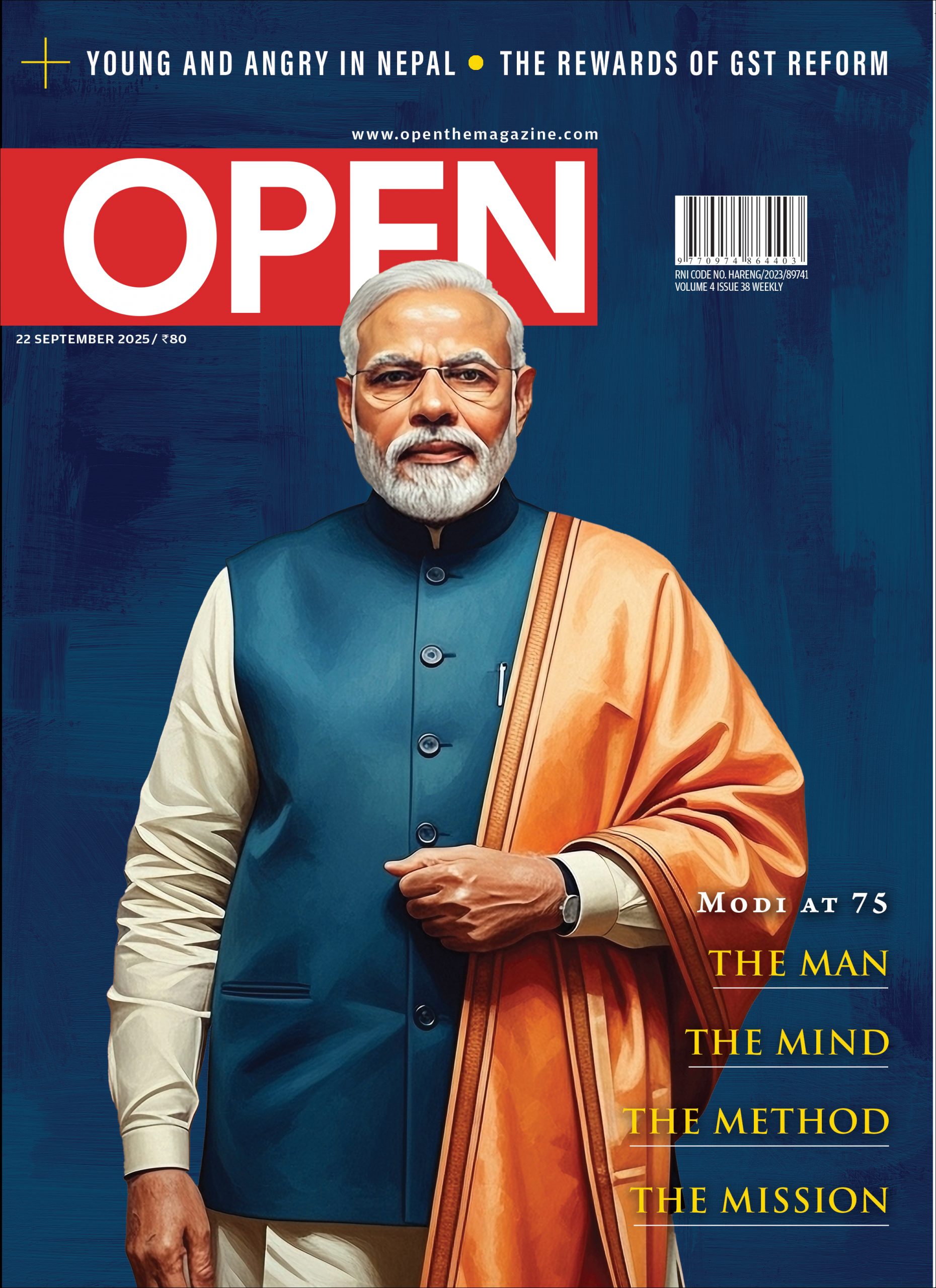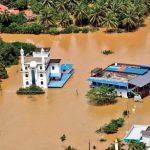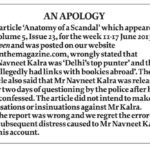India’s Demographic Tsunami
A think tank report warns that India is poised on the brink of anarchy, that we could hurtle very fast into an ungovernable mess. Worst case scenario? But highly plausible. The signs are all around us.
 Sudeep Chakravarti
Sudeep Chakravarti
 Sudeep Chakravarti
Sudeep Chakravarti
 |
08 Jul, 2010
|
08 Jul, 2010
/wp-content/uploads/2015/11/india-tsunami.jpg)
A think tank report warns that India is poised on the brink of anarchy, that we could hurtle very fast into an ungovernable mess.
The Kesroli Group is a modest-sized, close-knit think tank of top professionals from the world of business, finance, policy, public affairs, media and non-government organisations, comprising Indian citizens and those of Indian origin under the age of 50. In late 2009, key members initiated discussions on ongoing and impending situations with a view to generating awareness and solution-oriented discussion with what one member with extensive consulting experience termed “thought triggers”. The idea was that eventually these would contribute to policy and implementation that seek to make India a better place.
India’s Demographic Tsunami derives from that exercise. This section, titled ‘A Modified Internal Geography’, assumes all the ‘upside’ stories about India, from the growth of the economy and purchasing power to greater relevance in the global arena; these have generally tended to fuel exuberance and dampen realism to the point of delusion.
And so, this paper also assumes the ‘downside’, bad news that continues to escalate with the good, and the continuation of endemic corruption and official callousness that haven’t yet been dented by the gradual spread of instruments such as the Right to Information Act; and increasing political maturity of the electorate. Polity, government, administration and, to an extent, business, will for the sake of palatable expediency continue to ignore no-brainer solutions that have repeatedly, for decades, been suggested by some of the best minds from India and overseas.
Several of India’s hard-won gains locally and globally appear to be threatened in the near and medium-term future. It is becoming increasingly clear that, unless addressed quickly and emphatically, India’s inherent national crisis will witness greater churn in the next 25 years. There is reason to be concerned that this churn could, quite easily, extend to the next 50.
This churn will mainly be on account of population pressure; mismatch of aspiration and reality; and roots of conflict such as caste-related and tribal alienation. In the foreseeable future, India will also continue to have to deal with several violent reactions and movements that, like the present cycle of Maoist rebellion, will be rooted in issues of right to livelihood; defence of property; delivery of law and order; and justice. India’s embedded corruption will continue to exacerbate these lamentable deficiencies.
In addition, there is a high possibility of continuing identity-related conflict, especially in northeastern India. Several of these issues are likely to be influenced by external factors, such as Pakistan, Bangladesh, China, and in the foreseeable future, Nepal and Myanmar.
While in several instances these could be state-mandated—such as Pakistan, China and Bangladesh’s on-again, off-again policies of destabilising various aspects of India—there is the equally high possibility of change and churn in neighbouring countries directly affecting the internal dynamics of contiguous areas in present-day India. For instance, a breakdown in Nepal’s political and social fabric will directly affect the bordering present-day Indian states of Uttarakhand, Uttar Pradesh, Bihar and West Bengal. Or, a huge displacement of population in Bangladesh on account of a rise of sea levels or population will directly impact the neighbouring present-day Indian states of West Bengal, Assam, Meghalaya, Tripura, and Mizoram.
In both cases, there will be an export of people, politics and religious beliefs into areas of India already stretched due to their own resource pressures and deep feelings of an imminent takeover by ‘outsiders’ glaringly evident in the present day.
Even a medium intensity progression along these lines is likely to lead to conditions of implosion of the Indian State—in form and substance—as we know it today. While this has obvious ramifications for the state of the nation and India’s internal security horizon, India’s ‘health’ will continue to affect the country’s external behaviour, from diplomatic efforts to security initiatives and responses.
Such a crisis-ridden state, as outlined above, could be significantly closer than might appear. Consider the challenges.
How Will We Feed So Many People?
In 2020, just over a decade from now, India’s urban population will have gone up from around 23 per cent of the total at present to 40 per cent. In absolute numbers, this would mean a shoot up from 285 million to 540 million—an immense challenge, even with a rapidly growing economy. Alongside, while the proportion of rural population would lessen, it would still be in the region of 820 million. The same area, 350 million more people, and around the same number of new jobs to be created. As for feeding them: foodgrain production would have to increase to 260 million tonnes a year, up from the present 190-200 million tonnes, using roughly the same amount of arable land.
This is mild compared to the scenario closer to 2050. India’s foodgrain requirement would then be an estimated 400 million tonnes a year for a population in excess of 1.5 billion. According to an estimate, the ‘replacement level’ (a couple replaced by two children) should ideally have been reached by 2000. This ‘stabilisation’ of population is unlikely to be reached till the close of this century.
At current levels of incapable irrigation, uneven agricultural productivity, and increased rates of rural displacement on account of direct human intervention (watershed and water-table loss, deforestation), this could prove impossible. There will be no recourse but to import vast quantities of food, but what of the effect of people ‘on the move’ with nowhere to go but crushed urban and semi-urban zones? Human displacement will be on a scale bigger than anything seen thus far in India.
India would need to provide productive opportunities for nearly 600 million people who are now aged 30 or less, in an environment of shrinking agricultural activity, massive leakage of development funds in rural, semi-urban and urban areas, and continual overburdening of urban spaces.
In this situation, India will be further hampered by the official and policymaking tendency to play percentages and not absolute numbers:
The Numbers Are Scary
One per cent in India equals more than 10 million people—and will soon equal 15 million.
An estimated 50 million live in urban slums. This number will dramatically increase, through the creation of new slums.
Estimates of those displaced by projects since India’s Independence average 50 million. Of these, a majority have been resettled, but not rehabilitated. Ongoing displacement will get more acute.
India’s landless rural peasantry is estimated in the range of 18-20 million. This will increase with further fracturing of landholding, and destitution on account of non-family issues (indebtedness; crop failure; non-remunerative pricing; cheaper imports; rising input costs on account of ‘terminator’ seeds and chemical fertilisers.)
A 10,000-strong armed Maoist cadre may appear minuscule when dealt within the blinding framework of percentages, but it is prudent to remember that it took 19 people and a relatively small logistics team to bring down the World Trade Centre towers, among other attacks, and trigger the nearly decade-long ‘Global War Against Terror’.
In ‘urban’ and ‘industrial’ spaces, India will need to absorb a vast, continually increasing workforce. The incidence of physical emigration for work or change of residence will dramatically lessen as traditional overseas ‘buyers’ of manpower look to replace such human resources with their own. Outsourcing or back-office employment is finite.
India’s growth of population and construct of education combine to ensure a disturbing spillover of the unemployed and the unemployable: a population that is increasingly vulnerable to radicalisation—from religious to the ideological.
Together, these problems represent vast pools of negative energy in the country, and there is little doubt that these problems are worsening.
India’s Map Will Change
By whatever name, manifestations of this negative energy, extreme left-wing movements or otherwise, will increase. Urban areas will see the emergence of livelihood-related violence that is currently being leveraged in several Indian cities around issues of ethnic identity and religion.
Several Northeastern states are in a condition of violent flux. The question of Jammu & Kashmir is, of course, a vastly disquieting matter (along with global, radical Islamism).
Current policy initiatives are worrying, as these are not oriented towards solutions, but towards the maintenance of conflict at ‘acceptable levels’ as deemed by the State. Insurgency scenarios and counter-insurgency capabilities take precedence over addressing issues of administration, skill sets and education (positive/negative job creation); food security; addressing the dispossessed (destitute, abandoned, resentful); and issues of urbanisation and migration. All this is bound to have deep political and geographic implications.
The map of India will surely change. More states and autonomous regions are likely—some estimates suggest close to 50 states from the present 28 in a matter of years. Telengana, Bundelkhand, Vidarbha, Marathwada, Jammu, Kashmir, Ladakh, Uttar Kannada, Dakshin Kannada, ‘Gorkhaland’, ‘Bodoland’, separation of the present Khasi and Garo Hills—are all likely units.
However, there is a limit to how much the drawing of lines and setting up of separate administrations can address inherent ills, as India’s present rot in politics and governance and great public apathy helps to perpetuate so many problems.
In extreme situations brought on by a combination of both internal and external factors, the de facto external boundaries of India too could change, in a replay of ‘Pakistan Occupied Kashmir’ and Aksai Chin. In this context, Northeastern India is particularly vulnerable.
A Modified Internal Geography
Extreme left-wing movements will spiral beyond present-day comprehension and reach, driven by increasing urbanisation in spaces around present-day metropolitan areas; continual pressure on rural and forested areas to cede space to extractive and related business (such as mining); increasing political, financial and development (health care, sanitation, education, job creation) focus by central and state governments on urban spaces that will lead to greater resentment in, and alienation of, rural spaces/ populations. The momentum for accountability will—as now—increase in urban spaces and reduce in rural spaces. The Right to Information and similar devices are and will largely remain urban phenomena.
The fabric will stretch, and could finally tear. Large areas of India will be reshaped along fault lines of internal conflict. The Indian polity will be radically altered. Left-wing, tribal and caste militias will control central, east, south-central, and west-central India. Driven by a chain of militia ‘conglomerates’ that will recruit from local and/or ‘victim’ populations, with leadership largely drawn from this pool, militias will form a bulwark against the Indian Union of City States.
City states already exist in all but name. Mumbai/Navi Mumbai; Delhi/New Delhi that would, in the foreseeable future, see an administration for the National Capital Region (NCR); Kolkata and Greater Kolkata; Chennai; Bengaluru; Hyderabad; and so on.
These metropolitan areas are already among the largest in the world. These will form security and trade corridor links with growing secondary hubs, and ultimately form a longer, secure chain that will run along northern and peninsular India’s extremities, approximating the present-day idea of the ‘Golden Quadrilateral’ system of expressways.
NCR will link northwards with Chandigarh and further on towards Jammu, which will form the northern bulwark of a re-ordered Indian state, with the loss of Kashmir Valley.
This corridor will travel southwest towards Jaipur to link with a hub in Ahmedabad and further, down towards Mumbai.
Mumbai will form the western hub along with an extension to Pune/Aurangabad, and form the link southward along the Konkan Coast with present-day Thiruvananthapuram (which will become part of the ocean-front city state of Kochi-Karwar).
A similar, south to east corridor will from here travel up to Chennai (then link with the inland hubs of Bengaluru and Hyderabad) as far as Vishakhapatnam; and then to the hinterland of Kolkata (Haldia) and finally to Kolkata. The intervening coastal space will be controlled by left-wing and tribal militias just short of the missile testing area of Chandipur on the southeastern edge of Orissa, which forms an important defence/ commercial zone along with Haldia. Militias will, however, control Orissa’s Paradip Port.
The north-to-east link will not be secure, as a severe breakdown of socio-economic and political cohesion, aided also by effects of the implosion of Nepal on account of a complete breakdown of the present-day political and economic process, will create vast null spaces devoid of ‘conventional’ administration. The region of the Gangetic plains will form a patchwork of rural and semi-urban communities that will be feudalistic in administration, collapsing into a ‘medieval’ format run by warlords or conglomerates of warlords.
The northern borderlands of this region will form alliances with the ‘Central’ Indian administration to oversee its ‘border defences’ by proxy. This will be to offset the southward push of displaced Nepali communities deeper into the Gangetic plains.
As the left-wing and tribal militia region will lie directly to the south of the Gangetic plains, the Government of India will have to deal with the possibility of warlords from the Gangetic plains entering into loose agreements with these militias to ensure flow of arms and ammunition and trade —including natural and chemical narcotics—and provide sanctuary for mutual benefit. These two groups will not impinge on the other’s territorial ambit after repeated failure of the Gangetic plains group/s to wrest control of central and eastern Indian mineral concentrations.
The United States of India
The concept of the ‘Centre’ of India will change. The Government of India will really be governing the United States of India, with a new Charter/ Constitution that provides for alliances with administrations of City States/ Hinterland Entities by agreement of their respective local representatives and referendum—unlike singular entities (as with the Subcontinent’s Partition exercise).
The ‘state’ or ‘province’ will merely be the hinterland to these cities, providing—with regional variations—food, industrial zones, trade parks, ports, airports, and defence hubs. Core areas of the City State will entirely be residential and service oriented. It will not be unusual for foreign governments or corporations to enter into separate diplomatic and business arrangements with preferred City States, after informing the ‘Central’ government.
The remainder of present-day Central, Centre-East, and Peninsular India will be outside the agglomeration of New States, dominated by several left-wing militias. Like the present-day Shan Region that forms the core of the so-called Golden Triangle of Myanmar, Laos and Thailand, the ‘Leaders’ or ‘Politburo’ of each region will hold sway over vast patches of territory.
This belt will comprise the present-day regions of Marathwada and Vidarbha in Mahrashtra; Chhattisgarh; Madhya Pradesh; Jharkhand; Orissa; and areas of West Bengal that have not been swamped by a population shift that moves steadily westward.
These pseudo-socialist zones will skirmish or maintain peace with the other, essentially to protect territories of agrarian activity, but overwhelmingly to control mineral resources and rivers/waterways in their territories. The Narmada river system; Mahanadi river system; and Godavari river system, for example, will be part of these zones.
The entity known as United States of India will enter into separate arrangements with the administrations of these militia-controlled regions for procuring primary materials and metals. Also, to ensure waterway flows, in exchange for major concessions—including maintenance of status quo until the ‘national’ entity feels suitably strengthened to begin to make forays to reclaim territory from warlords and militias.
This status quo, however, will remain in place for a considerable time. After a period of great churn leading to major dislocation of primary economic activity, there will be a balance imposed by realisation by ‘Indian’ authorities that, strategically, the requirement of troops and defensive/ offensive capability is more crucial along western, northern and eastern borders. Equally, that policing capabilities will be of critical value for maintaining control/ peace in the City States and Hinterlands. Safe-Passage Agreements for goods/ produce with warlord- and militia-controlled areas will, therefore, be of realpolitik value.
A further play of reality will come to emerge on account of protecting business and industry. There will be vast paramilitary commitment to protect business enclaves (including Economic Zones); factory sites; power plants; dams and waterways; highways and subsidiary roads. Urban policing will be more ‘militarised, with forces trained in urban warfare. The penal system will be among the first ‘infrastructure’ spaces to be upgraded. This is a natural progression in spaces that will have among the densest and most inequitable conditions on the planet.
There will be a growing incidence of urban and industrial areas controlled entirely by business in nominal partnership with administrators—a more concretised version of, for example, the system in Jamshedpur, which is run by the Jamshedpur Notified Area Committee, on which executives of the Tata Group and its nominees have representation, as does the Government of Jharkhand. (In this scenario, Jamshedpur will be over-run. The Tata Group and other businesses will have to sue for peace with militias.)
This realisation will be arrived at after a series of developments in relatively rapid succession in a matter of 5-15 years: a massive tribal uprising along central, eastern and southern areas as a reaction to large infusion of troops by India to protect mineral and related production areas. This will be managed by successors of present-day Maoists and newer left-wing militias that will ride on spontaneous outbursts and procurement of arms. After cities like Raipur, Jamshedpur and Nagpur are over-run by these militias, there will be strong public and business demands in other parts of India to impeach the administration of the day in New Delhi and demand a rethink of the Constitution, and insist on a new Charter of Unity.
A Proxy War with China
By this time, West Bengal would be under severe pressure to staunch the inward migration from Bangladesh; and Nepal would have imploded, leading to a proxy war there between China and India. Proxy wars would also have erupted between the two countries of Bhutan and Sikkim, leading to the increasing vulnerability of the so-called Chicken’s Neck region in West Bengal—for long the post-Partition gateway for India to its northeastern region, and the corridor to enable force projection against China in the eastern sector.
Waterway and roadway treaties signed with Bangladesh would have long-collapsed on account of turmoil in that country, leading to a squeeze in transit of goods and people from ‘Mainland’ India to Northeastern India.
This will lead the Northeast to effectively become another area of proxy war between China and India. While China will retain the advantage of a superior logistics position, India will attempt to use a counter-faction in Myanmar to supply proxy wars from western and southwestern Myanmar to retain control of the various tribal homelands in the present-day Northeast. Global opinion will ensure the conflict remains a non-nuclear one, bolstered by the heightened presence of Nato and Asean navies, air defence forces and troops in the Bay of Bengal and Indian Ocean area.
As a concurrent development, there will be a move towards greater ‘nationalism’ and an accompanying consolidation of right-of-centre ideologies and politics—though not necessarily through present-day political approaches.
The Bharatiya Janata Party (BJP) in its current form would lose meaning. The Congress would move closer to the right in its actions. The driving force of this shift will be a sense of survival—an ‘Indian-ness’ that has organically evolved since Partition in vast areas of the Republic of India, even as this sentiment/reality has fallen woefully short in other areas.
There will be greater elements of Hindu militancy, but in the overall scheme of things, this will be akin to a range of militant influences that will inevitably exist in crushed urban spaces—such as student factions professing ‘liberation’; radical Islamist cells; and suchlike.
Whichever way you choose to look at it, there is a tsunami brewing, and it will hit the country much before we are ready for it, given India’s present state of polity and governance.
AUTHOR’S NOTE:
1. The idea of a rash of Indian states is developed from the ‘India 2047’ project by Centre for Policy Research, New Delhi (India Today, August 15, 1997).
2. Data on the section on urban pressures is derived from India’s Urban Awakening: Building Inclusive Cities, Sustaining Economic Growth by Shirish Sankhe, Ireena Vittal, Ajit Mohan, et al, 2010; and Institute of Conflict Management, New Delhi.
3. Data on food security is derived from World Food Programme (wfp.org)
4. Some ideas have earlier been articulated in Red Sun: Travels in Naxalite Country, Sudeep Chakravarti, Penguin, 2008 & 2009); and ‘Root Cause’ columns by the author in the business newspaper Mint (livemint.com).
5. Jayant Sinha of Omidyar Network and Kesroli Group critiqued an early draft of the original paper prepared for Kesroli Group. ‘India’s Demographic Tsunami’ is his given title.
Sudeep Chakravarti is an independent analyst of socio-political and security issues in South Asia; a futurist affiliated to the World Future Society, Maryland, USA; a columnist; and consultant to media, corporations and think-tanks. Also a writer of narrative non-fiction and fiction, he lives in Goa.

/wp-content/uploads/2025/09/Cover-Modi-scaled.jpg)











More Columns
I Missed A Flight Thanks To Robert Redford, Plus He Took My Magazine! Alan Moore
Robert Redford (1936-2025): Hollywood's Golden Boy Kaveree Bamzai
Surya and Co. keep Pakistan at arm’s length in Dubai Rajeev Deshpande